Hello dear friends! Welcome to another edition of historical Fashion Friday. I hope you had a wonderful Thanksgiving holiday. Earlier in the week, I volunteered at the Farmers Branch Historical Park working with Girl Scouts. I wore an 1860’s Garibaldi Blouse and Skirt.

1860’s Garibaldi Blouse and Skirt
The Garibaldi blouse/bodice/shirtwaist was extremely popular in the 1860s. The inspiration for the name came from the uniform worn by the Italian revolutionary, Giuseppe Garibaldi, and his troops.
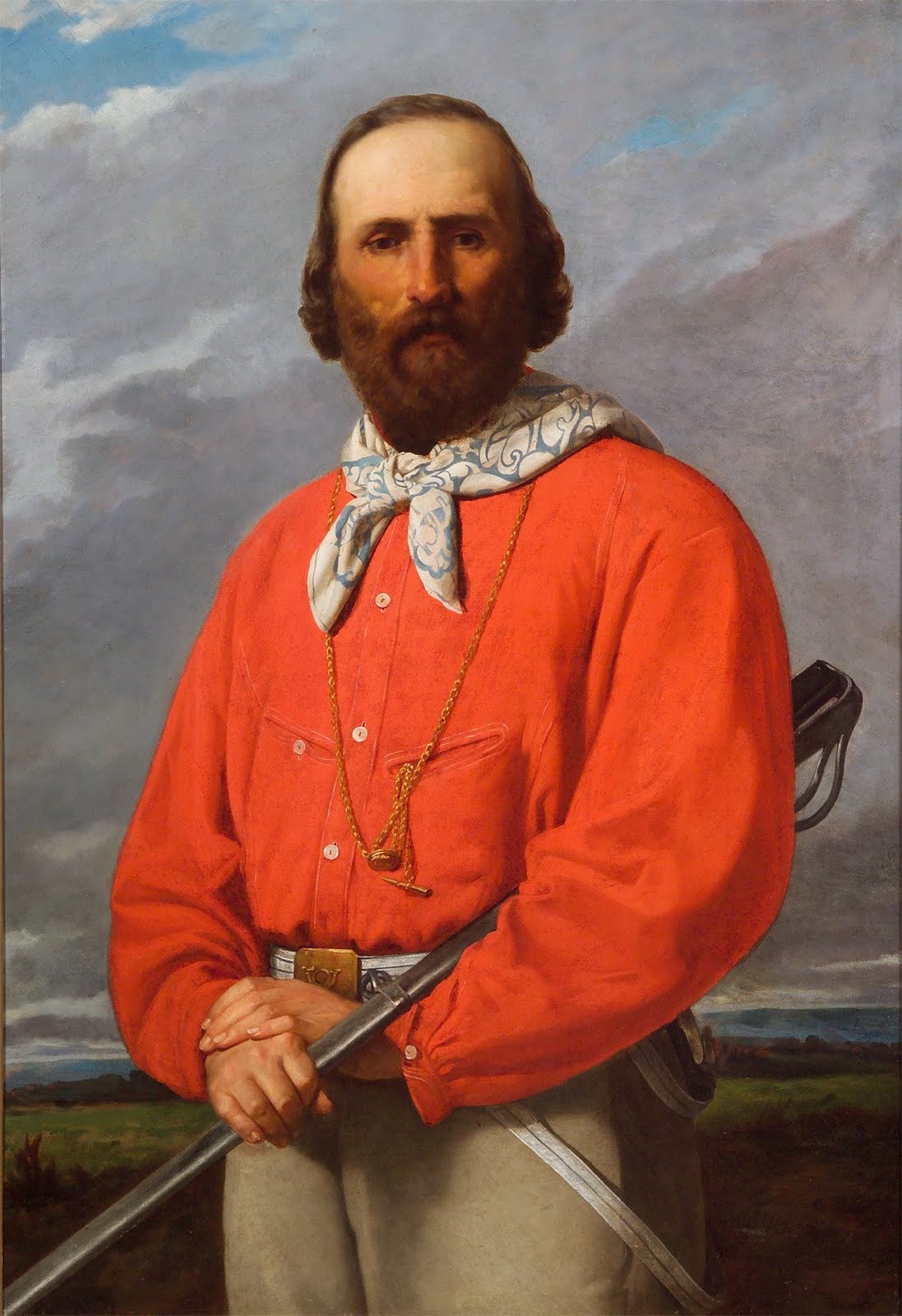
The military-style shirt became a fashion fad in ladies’ clothing. The bodices were often made in fine red wool flannel which was very different from our flannel today.
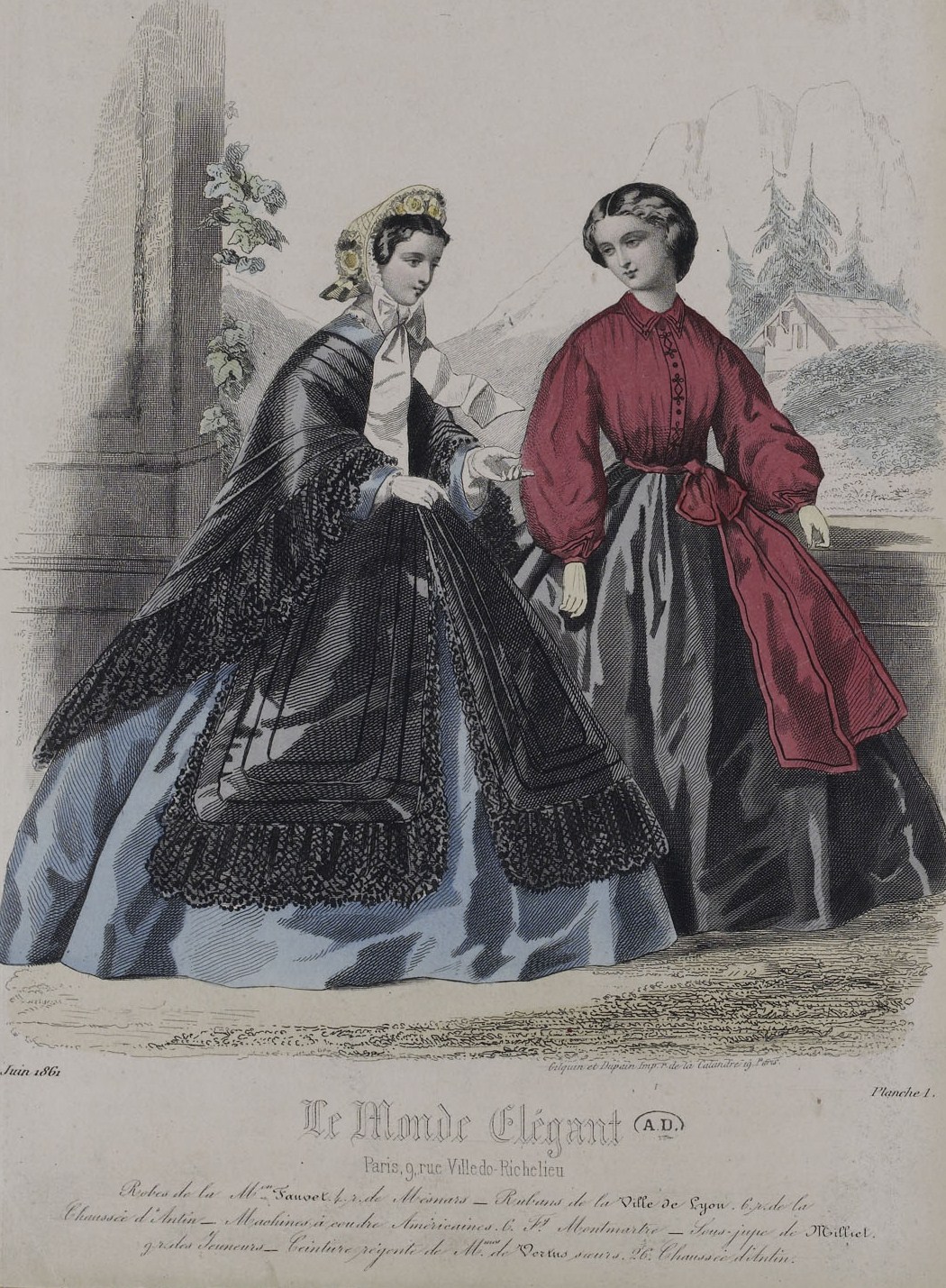
The blouse was first introduced as ladies’ fashion by Empress Eugenie of France. In 1862 Godey’s magazine declared that the Garibaldi shirt was “a change amounting to a revolution in ladies’ costume.” The shape of the bodice was created in the same way as a Victorian gentleman’s shirt. It featured pleats or gathers in the front, extending just below the waist, with full sleeves and turned-down cuffs.
The second most popular color was white but eventually, the style of the blouse was seen in other colors and prints.

The Garibaldi blouse became the forerunner of the modern-day woman’s blouse.
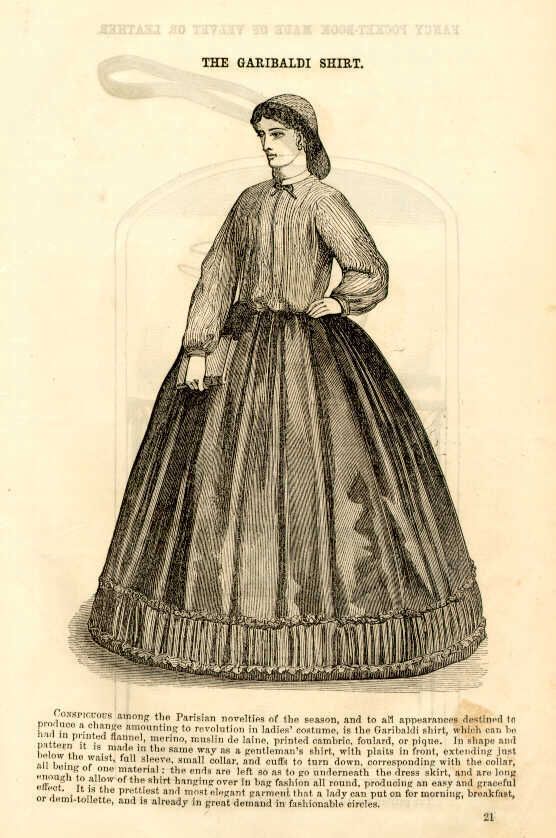
Simplicity 4551
To achieve the look I was seeking I opted to use a vintage pattern, Simplicity 4551, to create the skirt and blouse. This out-of-print pattern by fashion historian Martha McCain can be found on Etsy and eBay. I selected View A (the yellow ensemble).
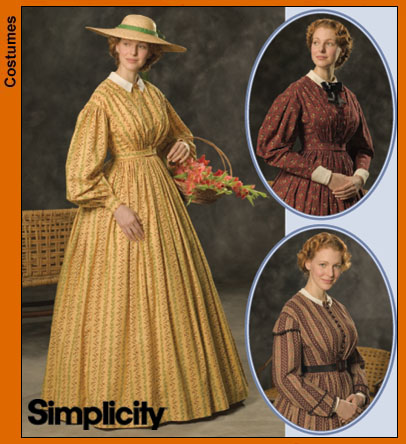
The bodice features a round “jewel” neckline. The interior lining, made from muslin, is darted to fit. The exterior fabric features a gathered bodice. It can be closed with either hooks and eyes or buttons.
The blouse features dropped shoulder seams and billowing sleeves. This coupled with the wide skirt helps to create the illusion of a small waist.
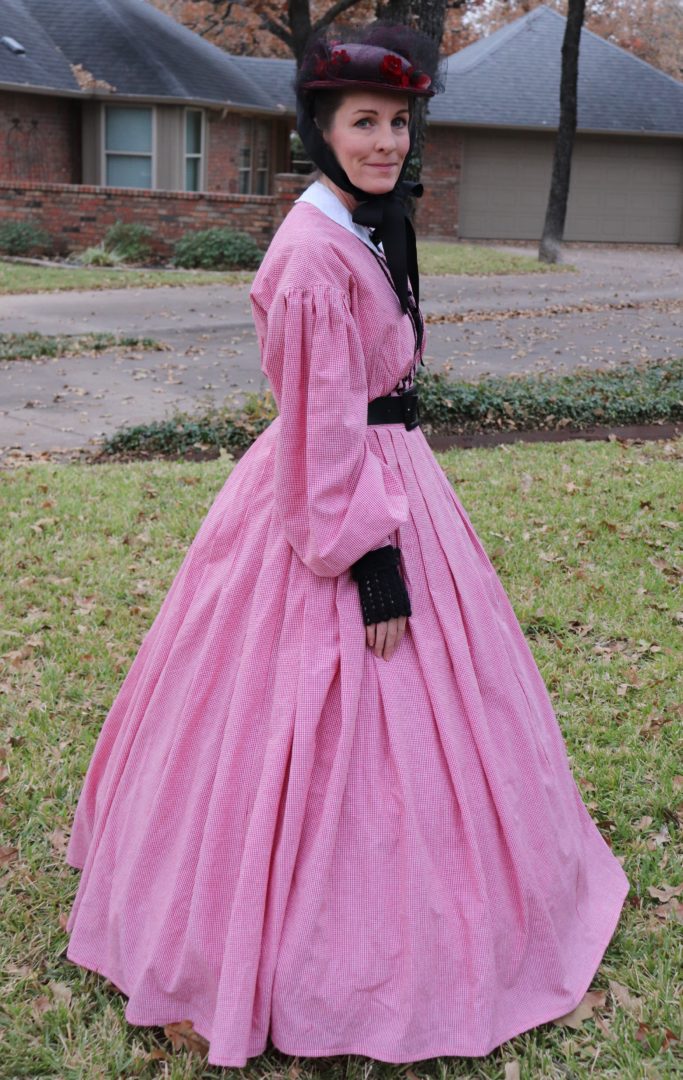
The pattern recommends gauging or cartridge pleating the skirt. As I was short on time I opted to use a combination of knife and inverted pleats.
QUESTION: does anyone know a simple formula in determining fabric pleating to waist ratio? Each and every time I end up wanting to throw my skirt into the trash or set it on fire. There must be an easier way.
Otherwise, it was a fairly straightforward pattern. I would recommend it for intermediate to advanced seamstresses or tailors.
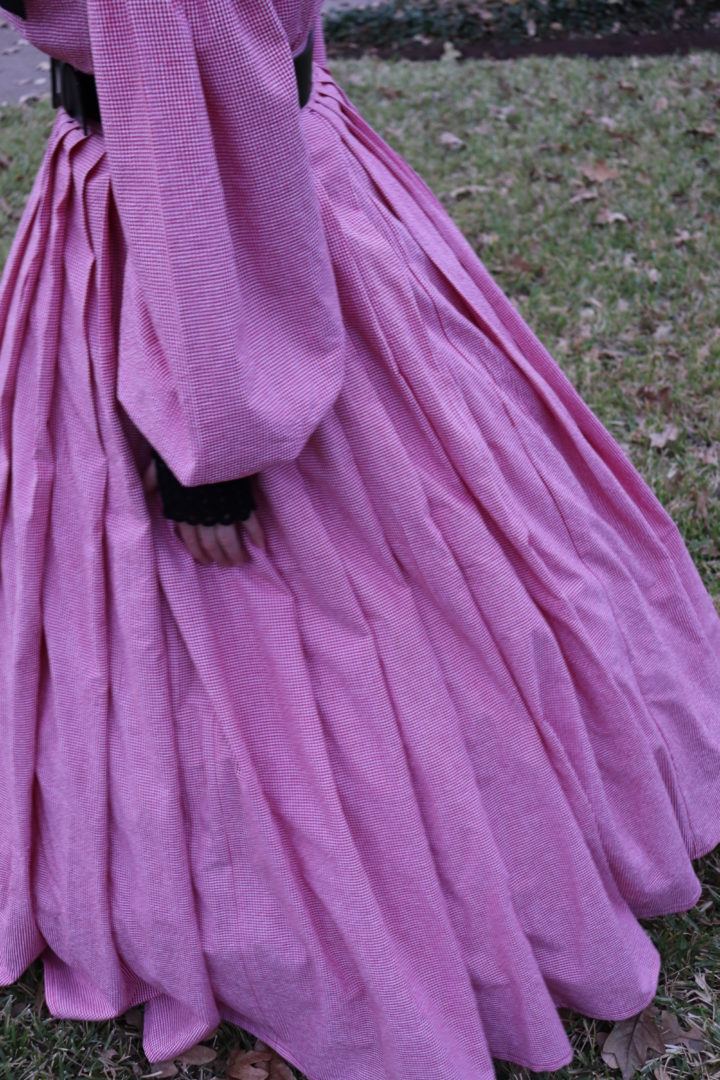
Gingham Style
My amazing friend, Dartanyan, gifted me 10 yards of lovely cotton red gingham. I knew instantly that I wanted to make a Girabaldi blouse and skirt combination.
Gingham was an extremely popular choice for bodices, skirts, and dresses during the 1860s.

Just like today, it came in all sorts of colors.

She’ll take all the gingham she can get!
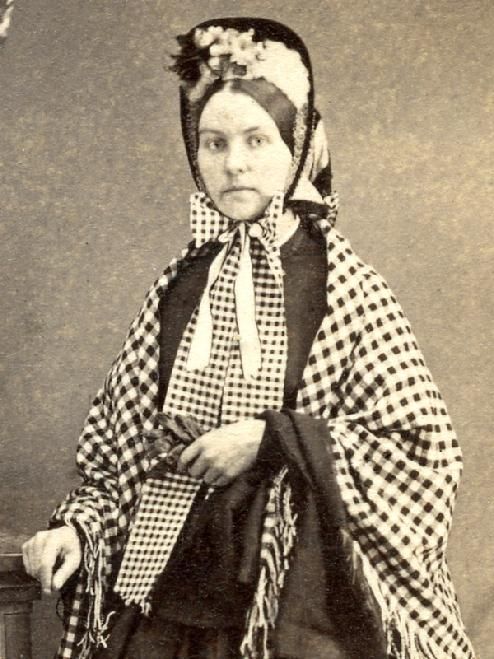
The Zouave jacket was a popular style worn over the blouses.

All The Trimmings
Many blouses during this era featured black trim in military-reminiscent designs.

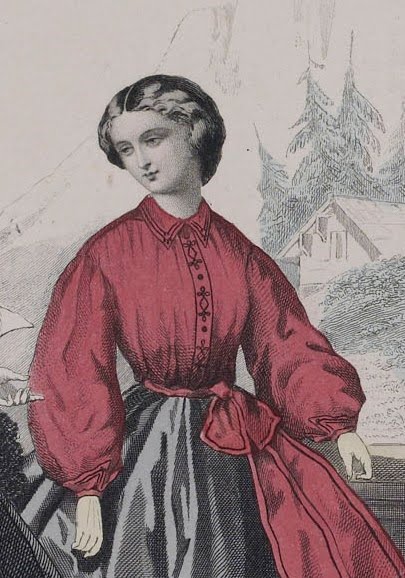
The designs were often created with a narrow braided trim. Most often made from wool.

This gorgeous red silk dress features a lovely wavy trim that inspired my design.
Rick Rack Attack
Now a pioneer woman, similar to what I portray, probably would not be able to afford such gorgeous wavy trim. She would also need a trim that was washable as her daily chores involved hard manual labor. Therefore her clothing would on occasion need to be washed versus being aired out or spritzed with vodka.
I opted to add braided vintage cotton rick rack trim to the bodice. It is applied with a “bird’s feet” embroidery stitch.
It should be noted that the plastic buttons are not historically accurate. But they are lovely and make me happy.

Rickrack was often seen as a trim on Victorian undergarments.
It was also a popular accent on children’s clothing. This dress dates between 1845 and 1855.

Now on more than one occasion I have “kindly” been informed that rick-rack was not used during this era.

However, I have found numerous articles in fashion magazines of the day. They show various designs that could be created using this simple trim.

This is why I subscribe to the “NEVER say never” philosophy in costuming.
Rickrack was indeed used during the Civil War.

Alert The Historical Fashion Police
I would like to mention that my ensemble does feature the wrong style of belt. I had ordered a reproduction buckle in the style of the day but it is on backorder.



Costuming Is Fun
As I am in a teaching position I strive to be as accurate as possible in representing what women of yesteryear would wear. But the bottom line is historical costuming should be fun. It brings me great joy to see the smiles on the faces of children and adults alike.
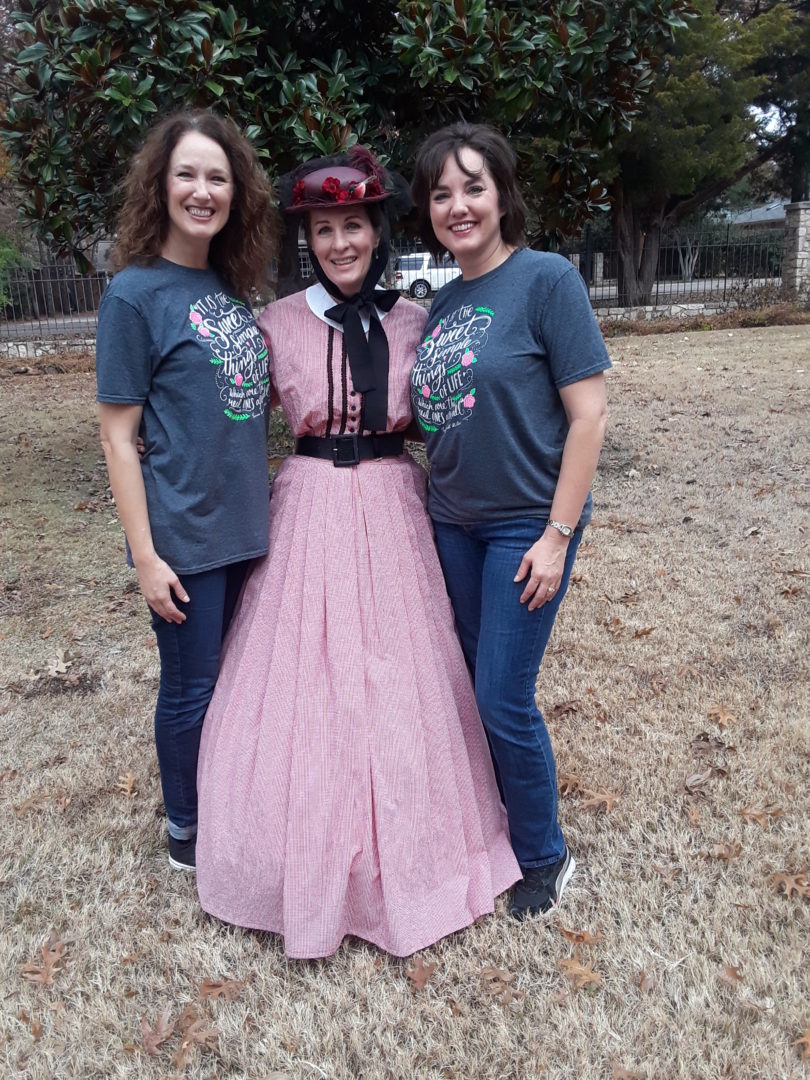
The rain did not dampen our enthusiasm.

A grand time making beeswax candles, pies, and more was had by all.

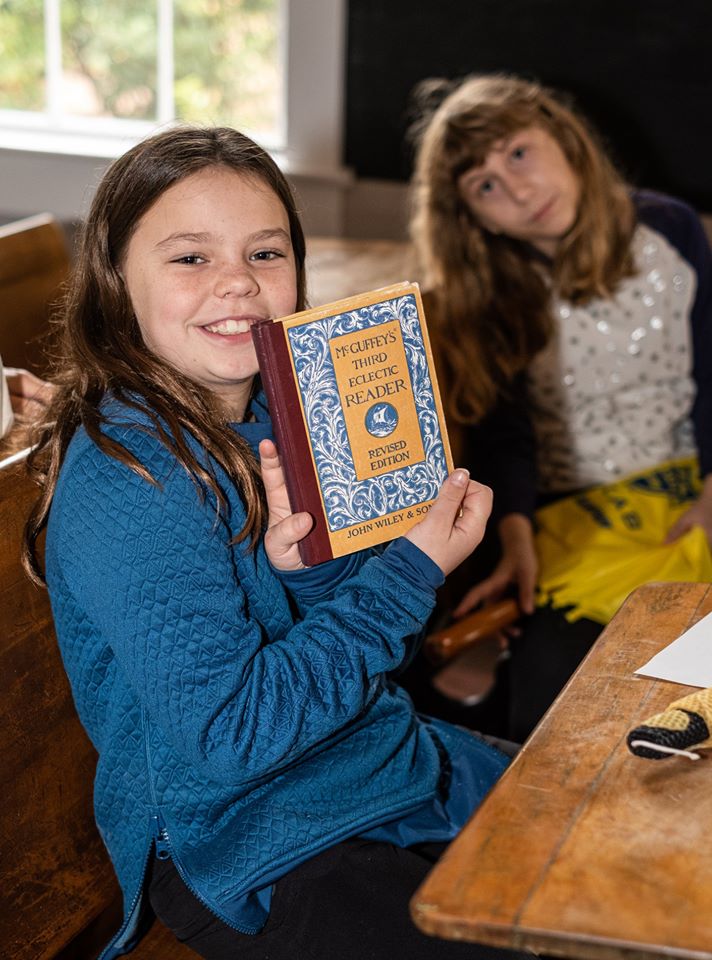
All The Other Details
My hat was last seen HERE.
I am wearing a faux chignon (bun) hairpiece purchased on eBay.
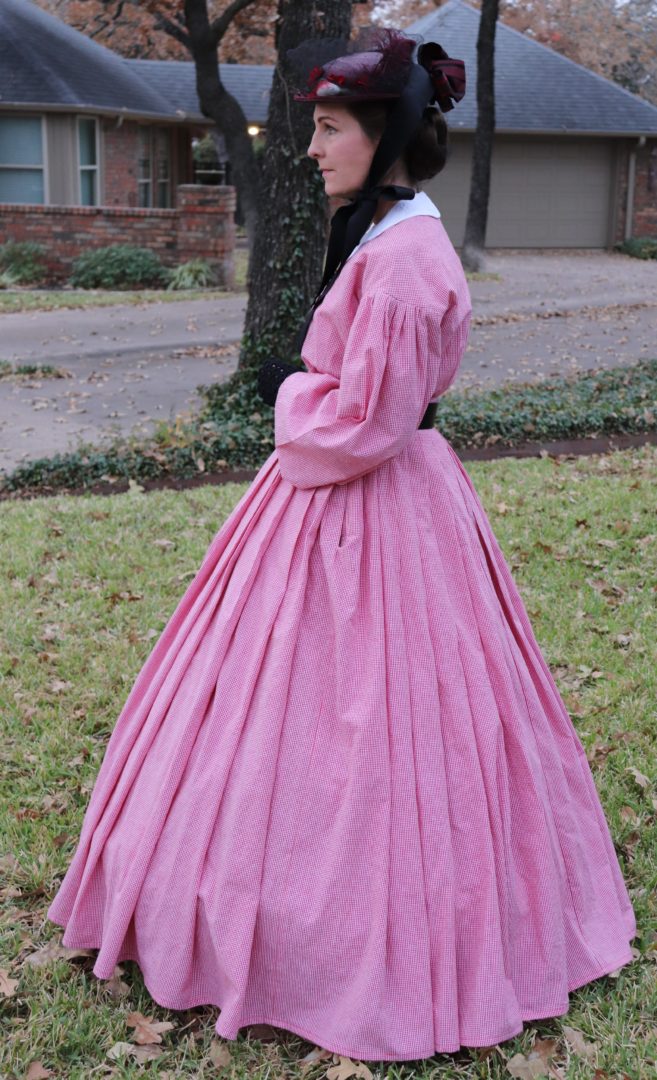
The collar was made by me and closes with a Victorian onyx mourning pin found at an estate sale. You can see it in this construction phrase photo.
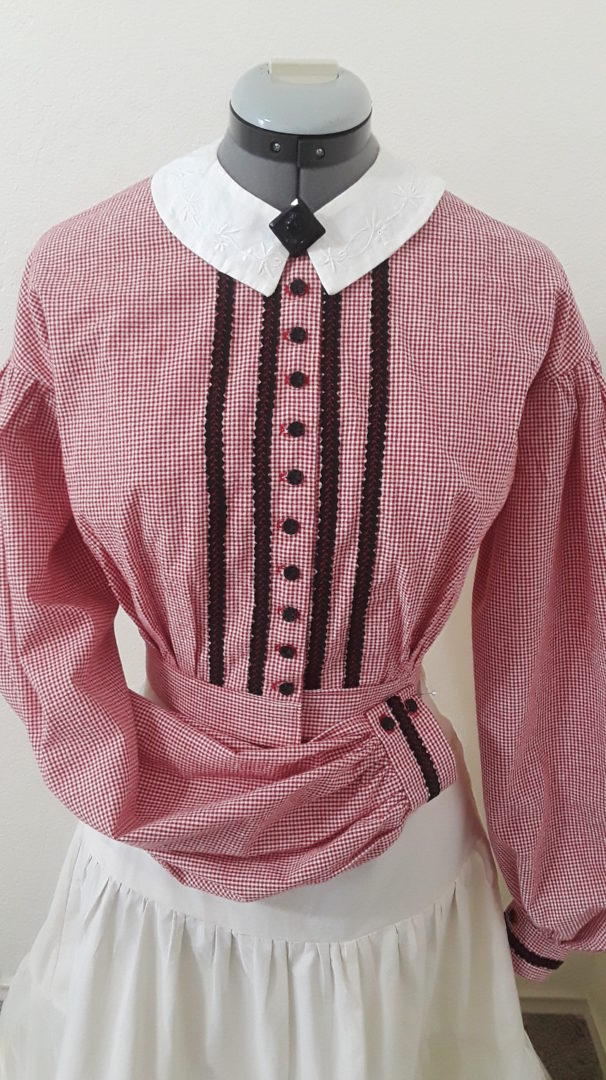
The amazing mitts were crocheted by Lynns Lovelies. Lynn creates other amazing historical garments such as gloves and sontags.

I hope you have enjoyed this latest installment of Fashion Friday. Previous garments are gathered for viewing HERE.

Next week will feature all things Christmas in the way of decor and more.
Have a wonderful holiday weekend.
Laura
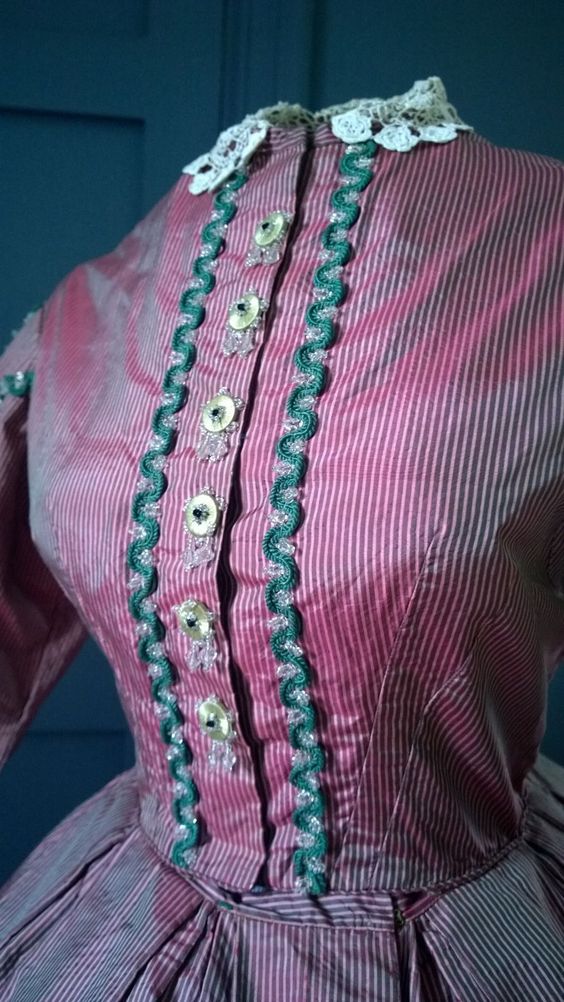
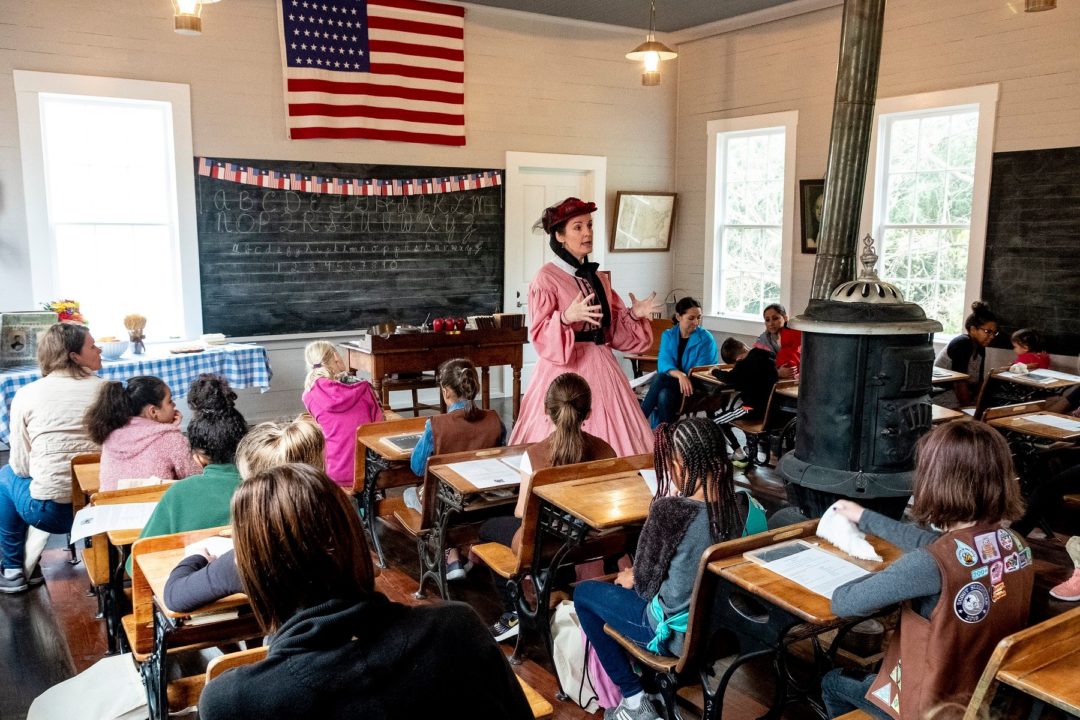

Oh wow, another beautiful outfit. You totally amaze me with your seamstress ability. Just gorgeous.
Great job! I like hearing the historical background.
I love the fabric you chose and those sleeves are just marvelous. Another hit!
Your 1860’s blouse & skirt are wonderful! My first historical costume was a Garibaldi blouse from Truly Victorian and is a little different from yours. Mine features a narrow stand-up collar. The event I was making it for was cancelled, so I have yet to wear it. For the skirt & petticoat, I found some very helpful information from the Historical Sewing blog (Divide & Conquer Pleating 1-16-17) & Southron Creations (How to Pleat An 1860’s Skirt 5-17-10). I’m like you though as I found it very frustrating and spent way too long adjusting the pleat= over & over again. I would have the skirt just the right measurement pinned in place. But when I went to baste the pleats down, the waist always expanded. I guess the pins take up more room. I don’t know how to solve that.
Laura, beautiful history and pictorial examples of the Garibaldi style, and excellent execution of your own. Fantastic!
Wow. Another great costuming event and your followers are privileged to join in. The young girls learned a great deal from you, I’m sure, as we all do. I was surprised at how handsome I thought the man looked in his Garibaldi “blouse” rather than a typical shirt style.
When my mother was teaching me to sew simple things as a child back in the early 50s – aprons, shift dresses, nightgowns, play clothes, etc, we always seemed to add colorful rick rack to everything. I wasn’t particularly fond of it, but for some reason she thought it made simple items fancier and less homemade, so I was quite often adorned, top and bottom, with the stuff. Thankfully, those items were not my “Sunday school” or my “good” clothing, but my everyday apparel. It was so long ago….. and I can smile about it now and remember those times with fondness.
Ha! Girl Scouts! I hope they appreciated your fabulous costume.
Gingham was a main output of the Lowell, MA, textile mills for many, many years. The first thing we had to make in sewing class in school was a gingham apron because, theoretically, the checks made it easy to gauge stitch length.
What a fantastic outfit. And I enjoyed hearing about its history.
Amalia
xo